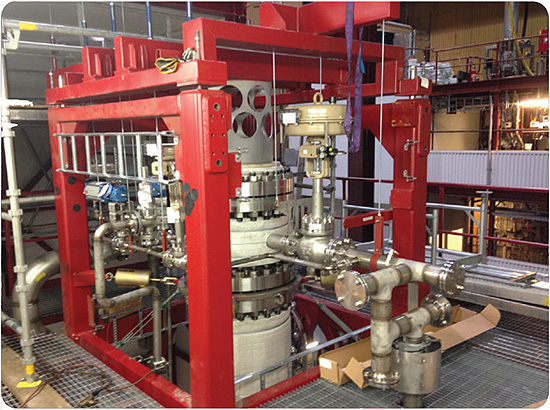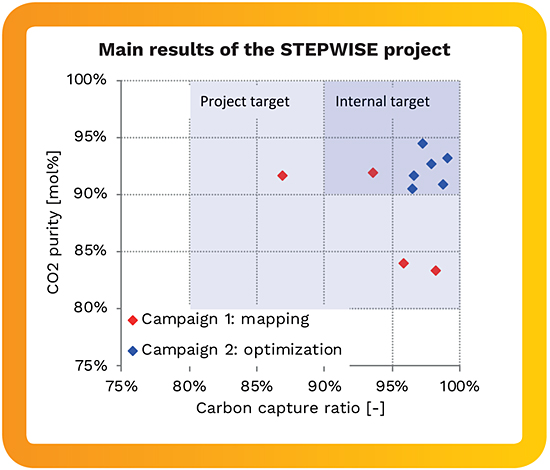The Iron and Steel industry produces more than 1 billion tonnes of new steel products every year, which is added to a pool of more than 850 billion tonnes of steel that is in circulation for everything from construction projects to transport vehicles, and many household products.
The production is responsible for an annual output of more than 2 billion tonnes of CO2 per year, of which 10% is directly released through industry in the European Union. This represents 6% of the total CO2 emission, and 16% of the total industrial emission of CO2. Moreover, the Iron and Steel industry is predicted to continue growing at an average rate of more than 3% per year.
Iron and steel is an essential ingredient to modern everyday life. Considering the climate implications of the associated CO2 released during manufacture, it is imperative that new methods be developed to reduce carbon emission and improve efficiency, while continuing to provide a ubiquitous feedstock that drives the economy forward. The Iron and Steel industry employs more than 300,000 people in the European union across 30 integrated steel mills; as well as many more people in smaller scale facilities for speciality products, e.g. production of car engines (20 million manufactured in 2017); and even more people indirectly, such as in the construction and many value-added industries.
To meet the European goals of carbon emission reduction, solutions need to be offered to allow European steel businesses to keep their competitive edge, and not simply export the CO2 emissions (and jobs) to other countries that have less stringent regard for climate. Technologies exist for thecapture of CO2 andthey have been deployed traditionally in the petrochemical and chemical industries as cleaning and quality control steps. Compared to these industries, CO2 emissions from Iron and Steel are substantially larger and require new, and more cost-effective ways of removing the CO2. The STEPWISE project is a demonstration of one of these new methods.
Decarbonisation of the Iron and Steel Industry
The production of Iron and Steel is energy intensive, and is characterised by three overall energy uses: one third of the energy is needed for the reduction of the iron ore to pig iron; one third is required for the high temperatures which are necessary to run the process; and one third is released again in low calorific, low value residual gases which contain the majority of the carbon emissions, and today, these are used mainly to produce electricity.

In the STEPWISE project, part of the energy content of these iron and steel works gases is used to power a CO2 separation step, called SEWGS, Sorption-Enhanced Water-Gas Shift. SEWGS produces two gas streams: CO2 is produced in a pure stream that is suitable for both sequestration, and utilisation by other industries; the remaining stream is a mixture of hydrogen and nitrogen that is suitable for both decarbonised heating (needed for many processes across the steel works) and decarbonised energy production.
How the STEPWISE and SEWGS process works
With the use of other capture technologies the amount of energy available in the off-gases is insufficient to drive the CO2 separation step. This means that a choice must be made between either importing extra energy (that must be fossil-free) or capturing less CO2. While this could be acceptable when only a small reduction of CO2 output is required, this becomes a burden when drastic reductions in CO2 are required, as is the case.
The SEWGS process is a separation process that works at 400°C, the same temperature as in many industrial processes, and the gases do not need to be heated and cooled between the different process steps, saving an enormous amount of energy. The SEWGS process also integrates the conversion of carbon monoxide (CO) in the off-gases to CO2, producing an H2 by-product. Furthermore, SEWGS, as implemented in the STEPWISE project allows for a route to progressively decarbonise over 85% of all CO2 emissions from the many processes that exist around a steel plant. In the first instance SEWGS can be implemented in the power plant, and later in various other units, e.g. the steel plant and the hot blast furnaces, and this enables it to meet the challenges of ever tightening CO2 emission targets, while not building capture technology that becomes obsolete when the targets are moved up.
Headline Results of the STEPWISE project
In the STEPWISE project, a 600m pipeline was built to transfer off-gases from a blast furnace in Northern Sweden to an experimental demonstration equipment plant with a Water-Gas Shift system for CO conversion and a SEWGS system to produce a CO2 and a H2 stream. Three stages have so far been completed, adding to a total of more than 5000 regeneration cycles of the clay-based material that, when adsorbed, removes and releases the CO2 from the off-gases. The SEWGS reactor is 10m high and contains several tonnes of the adsorbent material that has been produced on an industrial scale.

One of the main targets of the pilot stages was to develop the understanding of the heat management for the entire process, which is not possible at lab-scale. This understanding is has now been achieved, and it has allowed the design of a full-scale piece of equipment, which has also been costed. Additionally, a Life Cycle Analysis has shown that the STEPWISE implementation of SEWGS has a smaller environmental footprint than other carbon capture technologies.
The target for these early stages was to capture 80% of the CO2 in the blast furnace gas and deliver it at a purity of greater than 80%. This is a suitable target for a single column SEWGS and it was easily matched with a low steam-use. Steam is synonymous with an energy input and is needed in almost all CO2 capture technologies for the regeneration of CO2. The STEPWISE project demonstrated that less than 1 steam per CO2 captured was used, compared to other technologies that can use up to 3 steams per CO2 captured.
The Next Steps
The next steps to bring the SEWGS technology to maturity will be the demonstration of a multi-column system that will allow more than 95% capture of the CO2 in the off-gases, and produce a purity of more than 95% continuously, instead of in batches. Most of the utility equipment used for the STEPWISE project can be reused, which provides considerable cost savings. Also the productivity can be increased using the single column system, the final step before commercialisation. SEWGS will then be ready, as the legislation on CO2 emission catches up with the requirements of a decarbonised society.
More information of the STEPWISE project and SEWGS technology is available at www.stepwise.eu
The STEPWISE project has received funding from the European Union's Horizon 2020 research and innovation programme under grant agreement No. 640769.